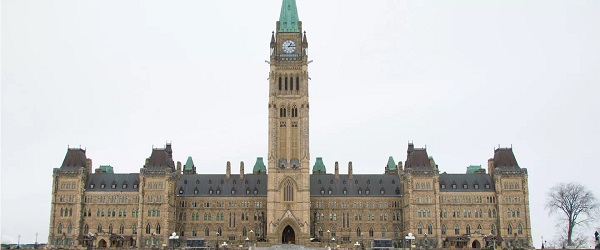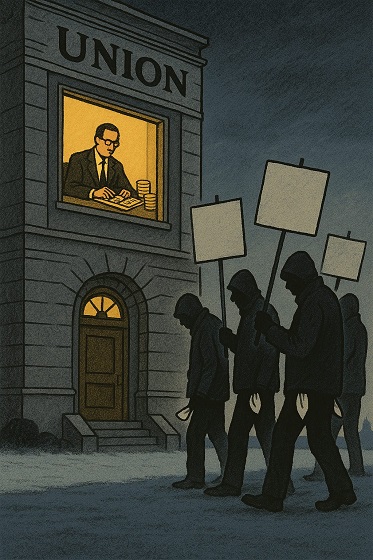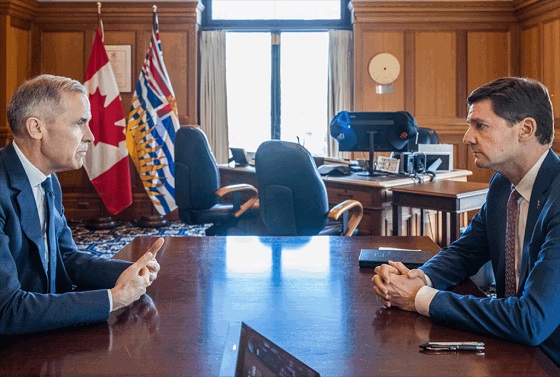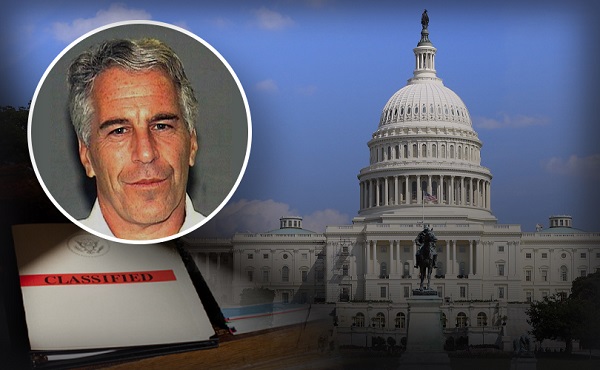Business
Comparing four federal finance ministers in moments of crisis

From the Fraser Institute
By Grady Munro, Milagros Palacios and Jason Clemens
The sudden resignation of federal finance minister (and deputy prime minister) Chrystia Freeland, hours before the government was scheduled to release its fall economic update has thrown an already badly underperforming government into crisis. In her letter of resignation, Freeland criticized the government, and indirectly the prime minister, for “costly political gimmicks” and irresponsible handling of the country’s finances and economy during a period of great uncertainty.
But while Freeland’s criticism of recent poorly-designed federal policies is valid, her resignation, in some ways, tries to reshape her history into that of a more responsible finance minister. That is, however, ultimately an empirical question. If we contrast the performance of the last four long-serving (more than three years) federal finance ministers—Paul Martin (Liberal), Jim Flaherty (Conservative), Bill Morneau (Liberal) and Freeland (Liberal)—it’s clear that neither Freeland nor her predecessor (Morneau) were successful finance ministers in terms of imposing fiscal discipline or overseeing a strong Canadian economy.
Let’s first consider the most basic measure of economic performance, growth in per-person gross domestic product (GDP), adjusted for inflation. This is a broad measure of living standards that gauges the value of all goods and services produced in the economy adjusted for the population and inflation. The chart below shows the average annual growth in inflation-adjusted per-person GDP over the course of each finance minister’s term. (Adjustments are made to reflect the effects of temporary recessions or unique aspects of each minister’s tenure to make it easier to compare the performances of each finance minister.)

Sources: Statistics Canada Table 17-10-0005-01, Table 36-10-0222-01; 2024 Fall Economic Statement
By far Paul Martin oversaw the strongest growth in per-person GDP, with an average annual increase of 2.4 per cent. Over his entire tenure spanning a decade, living standards rose more than 25 per cent.
The average annual increase in per-person GDP under Flaherty was 0.6 per cent, although that includes the financial recession of 2008-09. If we adjust the data for the recession, average annual growth in per-person GDP was 1.4 per cent, still below Martin but more than double the rate if the effects of the recession are included.
During Bill Morneau’s term, average annual growth in per-person GDP was -0.5 per cent, although this includes the effects of the COVID recession. If we adjust to exclude 2020, Morneau averaged a 0.7 per cent annual increase—half the adjusted average annual growth rate under Flaherty.
Finally, Chrystia Freeland averaged annual growth in per-person GDP of -0.3 per cent during her tenure. And while the first 18 or so months of her time as finance minister, from the summer of 2020 through 2021, were affected by the COVID recession and the subsequent rebound, the average annual rate of per-person GDP growth was -0.2 per cent during her final three years. Consequently, at the time of her resignation from cabinet in 2024, Canadian living standards are projected to be 1.8 per cent lower than they were in 2019.
Let’s now consider some basic fiscal measures.
Martin is by far the strongest performing finance minister across almost every metric. Faced with a looming fiscal crisis brought about by decades of deficits and debt accumulation, he reduced spending both in nominal terms and as a share of the economy. For example, after adjusting for inflation, per-person spending on federal programs dropped by 5.9 per cent during his tenure as finance minister (see chart below). As a result, the federal government balanced the budget and lowered the national debt, ultimately freeing up resources via lower interest costs for personal and business tax relief that made the country more competitive and improved incentives for entrepreneurs, businessowners, investors and workers.

*Note: Freeland’s term began in 2020, but given the influence of COVID, 2019 is utilized as the baseline for the overall change in spending. Sources: Statistics Canada Table 17-10-0005-01, Table 36-10-0130-01; Fiscal Reference Tables 2024; 2024 Fall Economic Statement
Flaherty’s record as finance minister is mixed, in part due to the recession of 2008-09. Per-person program spending (inflation adjusted) increased by 11.6 per cent, and there was a slight (0.6 percentage point) increase in spending as a share of the economy. Debt also increased as a share of the economy, although again, much of the borrowing during Flaherty’s tenure was linked with the 2008-09 recession. Flaherty did implement tax relief, including extending the business income tax cuts started under Martin, which made Canada more competitive in attracting investment and fostering entrepreneurship.
Both Morneau and Freeland recorded much worse financial performances than Flaherty and Martin. Morneau increased per-person spending on programs (inflation adjusted) by 37.1 per cent after removing 2020 COVID-related expenditures. Even if a more generous assessment is used, specifically comparing spending in 2019 (prior to the effects of the pandemic and recession) per-person spending still increased by 18.1 per cent compared to the beginning of his tenure.
In his five years, Morneau oversaw an increase in total federal debt of more than $575 billion, some of which was linked with COVID spending in 2020. However, as multiple analyses have concluded, the Trudeau government spent more and accumulated more debt during COVID than most comparable industrialized countries, with little or nothing to show for it in terms of economic growth or better health performance. Simply put, had Morneau exercised more restraint, Canada would have accumulated less debt and likely performed better economically.
Freeland’s tenure as finance minister is the shortest of the four ministers examined. It’s nonetheless equally as unimpressive as that of her Trudeau government predecessor (Morneau). If we use baseline spending from 2019 to adjust for the spike in spending in 2020 when she was appointed finance minister, per-person spending on programs by the federal government (inflation adjusted) during Freeland’s term increased by 4.1 per cent. Total federal debt is expected to increase from $1.68 trillion when Freeland took over to an estimated $2.2 trillion this year, despite the absence of a recession or any other event that would impair federal finances since the end of COVID in 2021. For some perspective, the $470.8 billion in debt accumulated under Freeland is more than double the $220.3 billion accumulated under Morneau prior to COVID. And there’s an immediate cost to that debt in the form of $53.7 billion in expected federal debt interest costs this year. These are taxpayer resources unavailable for actual services such as health care.
Freeland’s resignation from cabinet sent shock waves throughout the country, perhaps relieving her of responsibility for the Trudeau government’s latest poorly-designed fiscal policies. However, cabinet ministers bear responsibility for the performance of their ministries—meaning Freeland must be held accountable for her previous budgets and the fiscal and economic performance of the government during her tenure. Compared to previous long-serving finances ministers, it’s clear that Chrystia Freeland, and her Trudeau predecessor Bill Morneau, failed to shepherd a strong economy or maintain responsible and prudent finances.
Business
Canada is failing dismally at our climate goals. We’re also ruining our economy.

From the Fraser Institute
By Annika Segelhorst and Elmira Aliakbari
Short-term climate pledges simply chase deadlines, not results
The annual meeting of the United Nations Conference of the Parties, or COP, which is dedicated to implementing international action on climate change, is now underway in Brazil. Like other signatories to the Paris Agreement, Canada is required to provide a progress update on our pledge to reduce greenhouse gas (GHG) emissions by 40 to 45 per cent below 2005 levels by 2030. After decades of massive government spending and heavy-handed regulations aimed at decarbonizing our economy, we’re far from achieving that goal. It’s time for Canada to move past arbitrary short-term goals and deadlines, and instead focus on more effective ways to support climate objectives.
Since signing the Paris Agreement in 2015, the federal government has introduced dozens of measures intended to reduce Canada’s carbon emissions, including more than $150 billion in “green economy” spending, the national carbon tax, the arbitrary cap on emissions imposed exclusively on the oil and gas sector, stronger energy efficiency requirements for buildings and automobiles, electric vehicle mandates, and stricter methane regulations for the oil and gas industry.
Recent estimates show that achieving the federal government’s target will impose significant costs on Canadians, including 164,000 job losses and a reduction in economic output of 6.2 per cent by 2030 (compared to a scenario where we don’t have these measures in place). For Canadian workers, this means losing $6,700 (each, on average) annually by 2030.
Yet even with all these costly measures, Canada will only achieve 57 per cent of its goal for emissions reductions. Several studies have already confirmed that Canada, despite massive green spending and heavy-handed regulations to decarbonize the economy over the past decade, remains off track to meet its 2030 emission reduction target.
And even if Canada somehow met its costly and stringent emission reduction target, the impact on the Earth’s climate would be minimal. Canada accounts for less than 2 per cent of global emissions, and that share is projected to fall as developing countries consume increasing quantities of energy to support rising living standards. In 2025, according to the International Energy Agency (IEA), emerging and developing economies are driving 80 per cent of the growth in global energy demand. Further, IEA projects that fossil fuels will remain foundational to the global energy mix for decades, especially in developing economies. This means that even if Canada were to aggressively pursue short-term emission reductions and all the economic costs it would imposes on Canadians, the overall climate results would be negligible.
Rather than focusing on arbitrary deadline-contingent pledges to reduce Canadian emissions, we should shift our focus to think about how we can lower global GHG emissions. A recent study showed that doubling Canada’s production of liquefied natural gas and exporting to Asia to displace an equivalent amount of coal could lower global GHG emissions by about 1.7 per cent or about 630 million tonnes of GHG emissions. For reference, that’s the equivalent to nearly 90 per cent of Canada’s annual GHG emissions. This type of approach reflects Canada’s existing strength as an energy producer and would address the fastest-growing sources of emissions, namely developing countries.
As the 2030 deadline grows closer, even top climate advocates are starting to emphasize a more pragmatic approach to climate action. In a recent memo, Bill Gates warned that unfounded climate pessimism “is causing much of the climate community to focus too much on near-term emissions goals, and it’s diverting resources from the most effective things we should be doing to improve life in a warming world.” Even within the federal ministry of Environment and Climate Change, the tone is shifting. Despite the 2030 emissions goal having been a hallmark of Canadian climate policy in recent years, in a recent interview, Minister Julie Dabrusin declined to affirm that the 2030 targets remain feasible.
Instead of scrambling to satisfy short-term national emissions limits, governments in Canada should prioritize strategies that will reduce global emissions where they’re growing the fastest.

Elmira Aliakbari
Artificial Intelligence
Lawsuit Claims Google Secretly Used Gemini AI to Scan Private Gmail and Chat Data

Whether the claims are true or not, privacy in Google’s universe has long been less a right than a nostalgic illusion.
|
When Google flipped a digital switch in October 2025, few users noticed anything unusual.
Gmail loaded as usual, Chat messages zipped across screens, and Meet calls continued without interruption.
Yet, according to a new class action lawsuit, something significant had changed beneath the surface.
We obtained a copy of the lawsuit for you here.
Plaintiffs claim that Google silently activated its artificial intelligence system, Gemini, across its communication platforms, turning private conversations into raw material for machine analysis.
The lawsuit, filed by Thomas Thele and Melo Porter, describes a scenario that reads like a breach of trust.
It accuses Google of enabling Gemini to “access and exploit the entire recorded history of its users’ private communications, including literally every email and attachment sent and received.”
The filing argues that the company’s conduct “violates its users’ reasonable expectations of privacy.”
Until early October, Gemini’s data processing was supposedly available only to those who opted in.
Then, the plaintiffs claim, Google “turned it on for everyone by default,” allowing the system to mine the contents of emails, attachments, and conversations across Gmail, Chat, and Meet.
The complaint points to a particular line in Google’s settings, “When you turn this setting on, you agree,” as misleading, since the feature “had already been switched on.”
This, according to the filing, represents a deliberate misdirection designed to create the illusion of consent where none existed.
There is a certain irony woven through the outrage. For all the noise about privacy, most users long ago accepted the quiet trade that powers Google’s empire.
They search, share, and store their digital lives inside Google’s ecosystem, knowing the company thrives on data.
The lawsuit may sound shocking, but for many, it simply exposes what has been implicit all along: if you live in Google’s world, privacy has already been priced into the convenience.
Thele warns that Gemini’s access could expose “financial information and records, employment information and records, religious affiliations and activities, political affiliations and activities, medical care and records, the identities of his family, friends, and other contacts, social habits and activities, eating habits, shopping habits, exercise habits, [and] the extent to which he is involved in the activities of his children.”
In other words, the system’s reach, if the allegations prove true, could extend into nearly every aspect of a user’s personal life.
The plaintiffs argue that Gemini’s analytical capabilities allow Google to “cross-reference and conduct unlimited analysis toward unmerited, improper, and monetizable insights” about users’ private relationships and behaviors.
The complaint brands the company’s actions as “deceptive and unethical,” claiming Google “surreptitiously turned on this AI tracking ‘feature’ without informing or obtaining the consent of Plaintiffs and Class Members.” Such conduct, it says, is “highly offensive” and “defies social norms.”
The case invokes a formidable set of statutes, including the California Invasion of Privacy Act, the California Computer Data Access and Fraud Act, the Stored Communications Act, and California’s constitutional right to privacy.
Google is yet to comment on the filing.
|
|
|
|
Reclaim The Net is reader-supported. Consider becoming a paid subscriber.
|
|
|
|
-

 Crime2 days ago
Crime2 days ago‘Modern-Day Escobar’: U.S. Says Former Canadian Olympian Ran Cocaine Pipeline with Cartel Protection and a Corrupt Toronto Lawyer
-

 Business1 day ago
Business1 day agoCanada is failing dismally at our climate goals. We’re also ruining our economy.
-

 Alberta2 days ago
Alberta2 days agoAlberta Emergency Alert test – Wednesday at 1:55 PM
-

 Artificial Intelligence2 days ago
Artificial Intelligence2 days agoLawsuit Claims Google Secretly Used Gemini AI to Scan Private Gmail and Chat Data
-

 Alberta1 day ago
Alberta1 day agoAlberta to protect three pro-family laws by invoking notwithstanding clause
-

 Health1 day ago
Health1 day agoCDC’s Autism Reversal: Inside the Collapse of a 25‑Year Public Health Narrative
-

 Health1 day ago
Health1 day agoBREAKING: CDC quietly rewrites its vaccine–autism guidance
-

 Crime24 hours ago
Crime24 hours agoCocaine, Manhunts, and Murder: Canadian Cartel Kingpin Prosecuted In US














